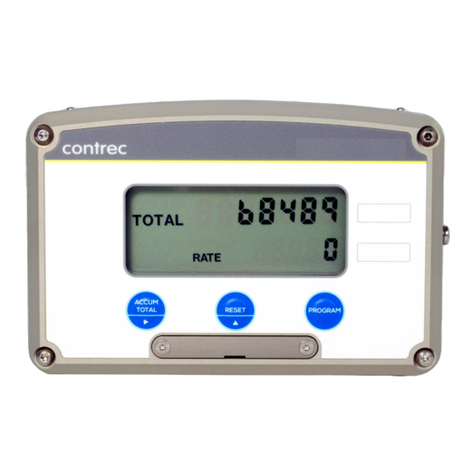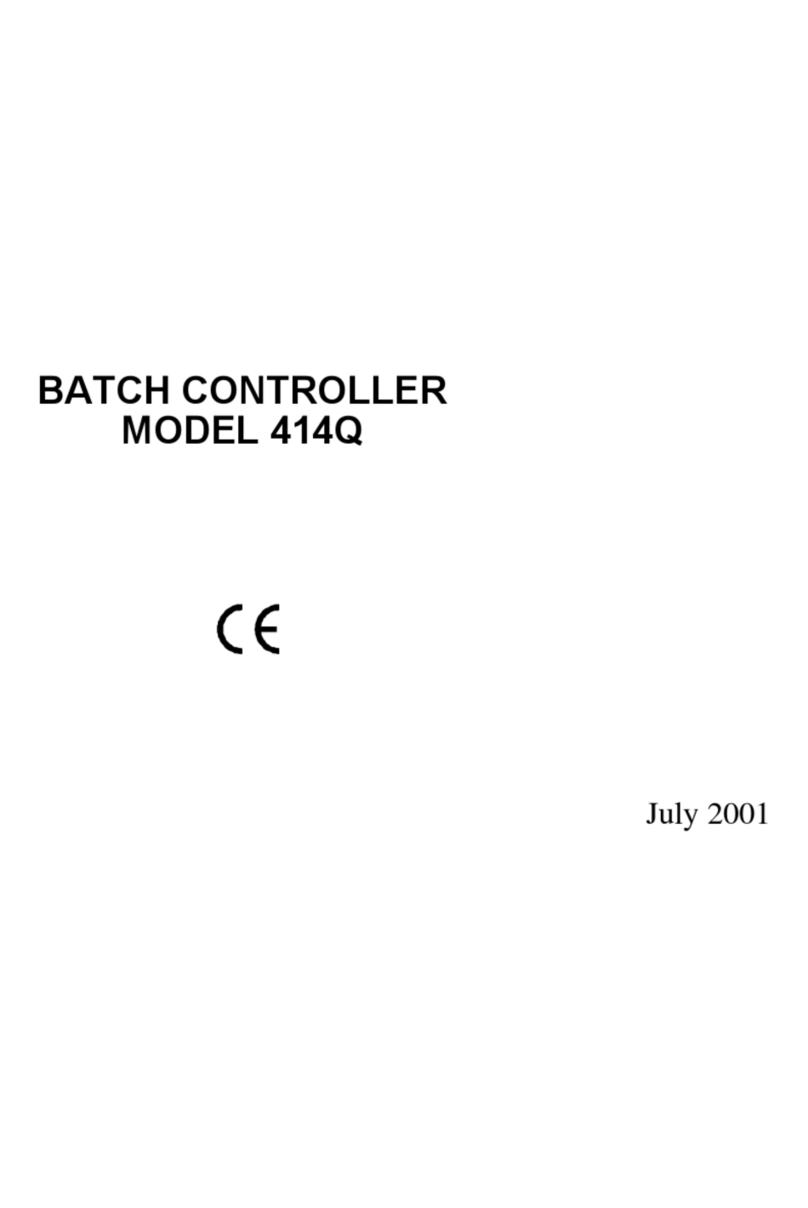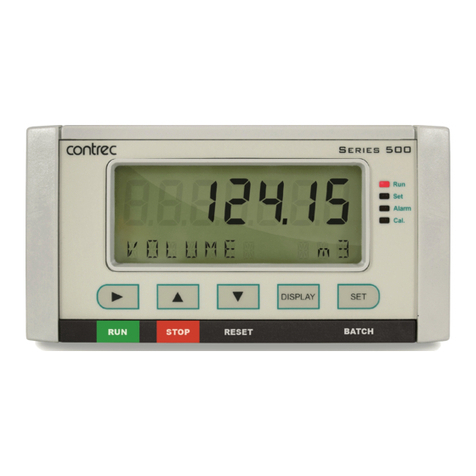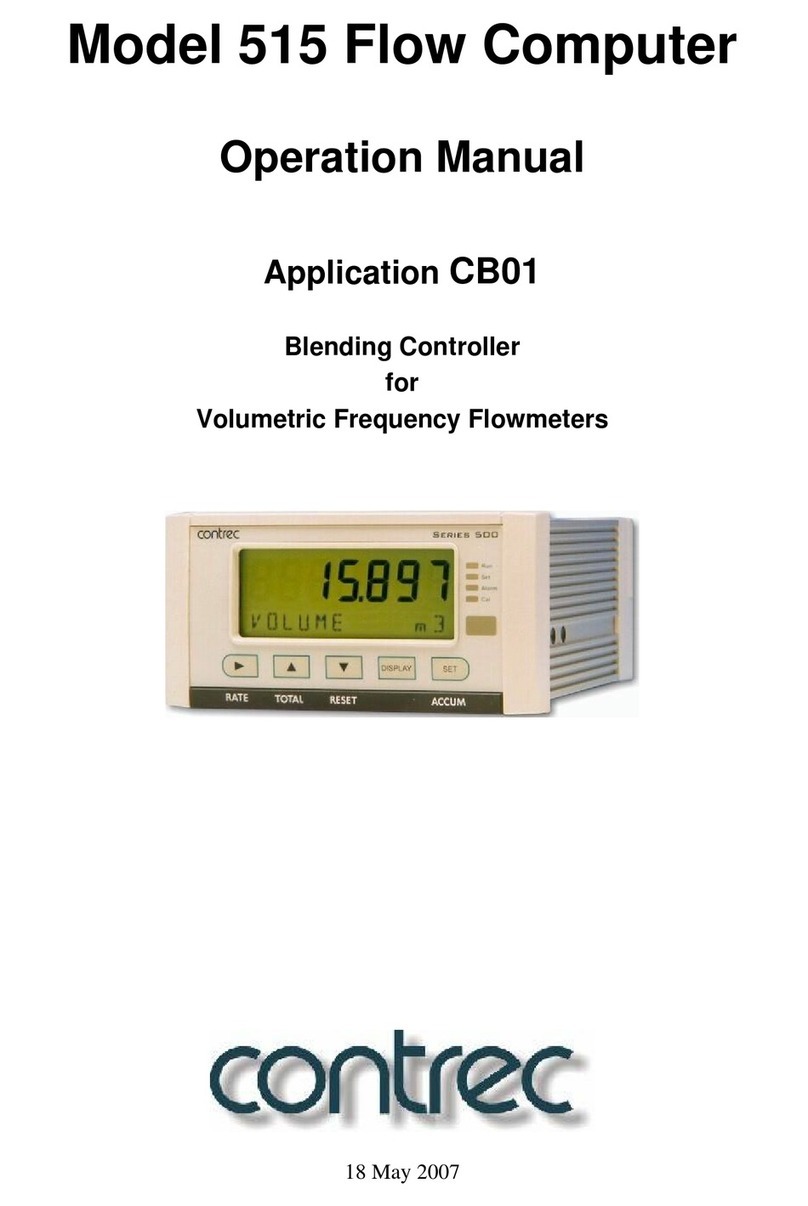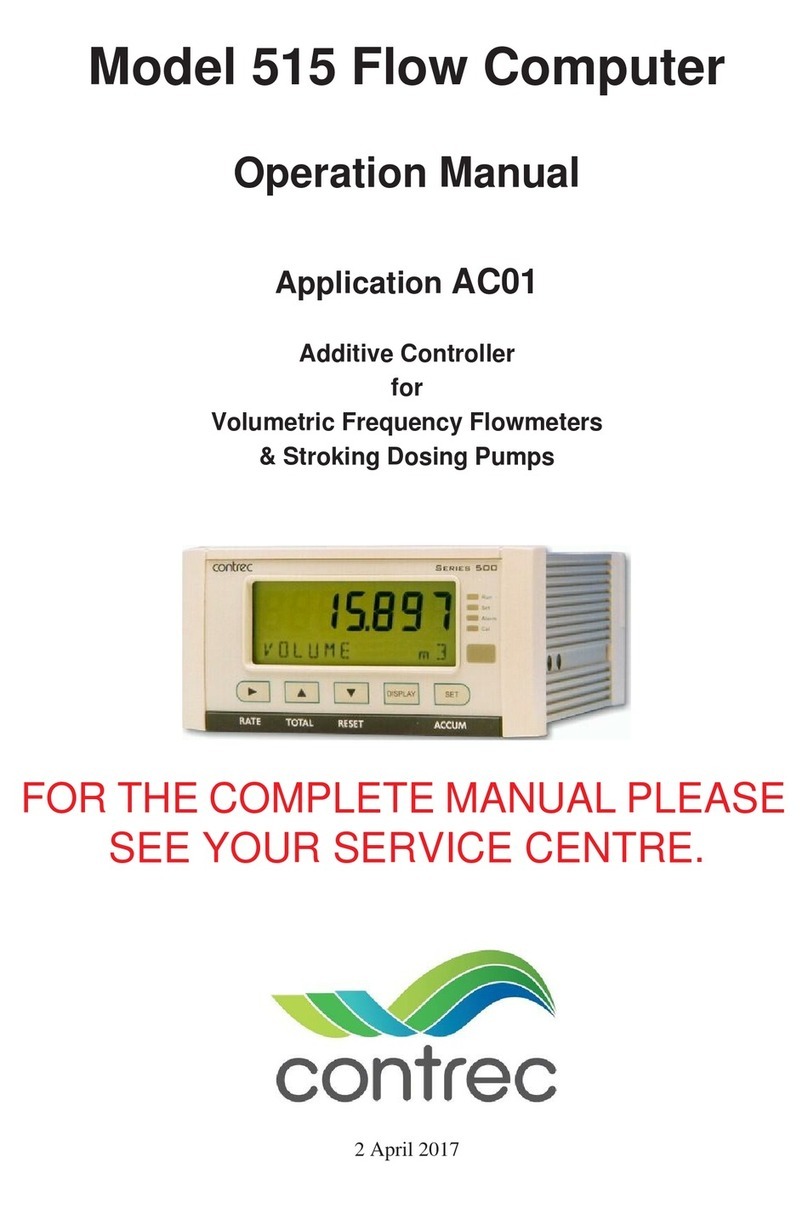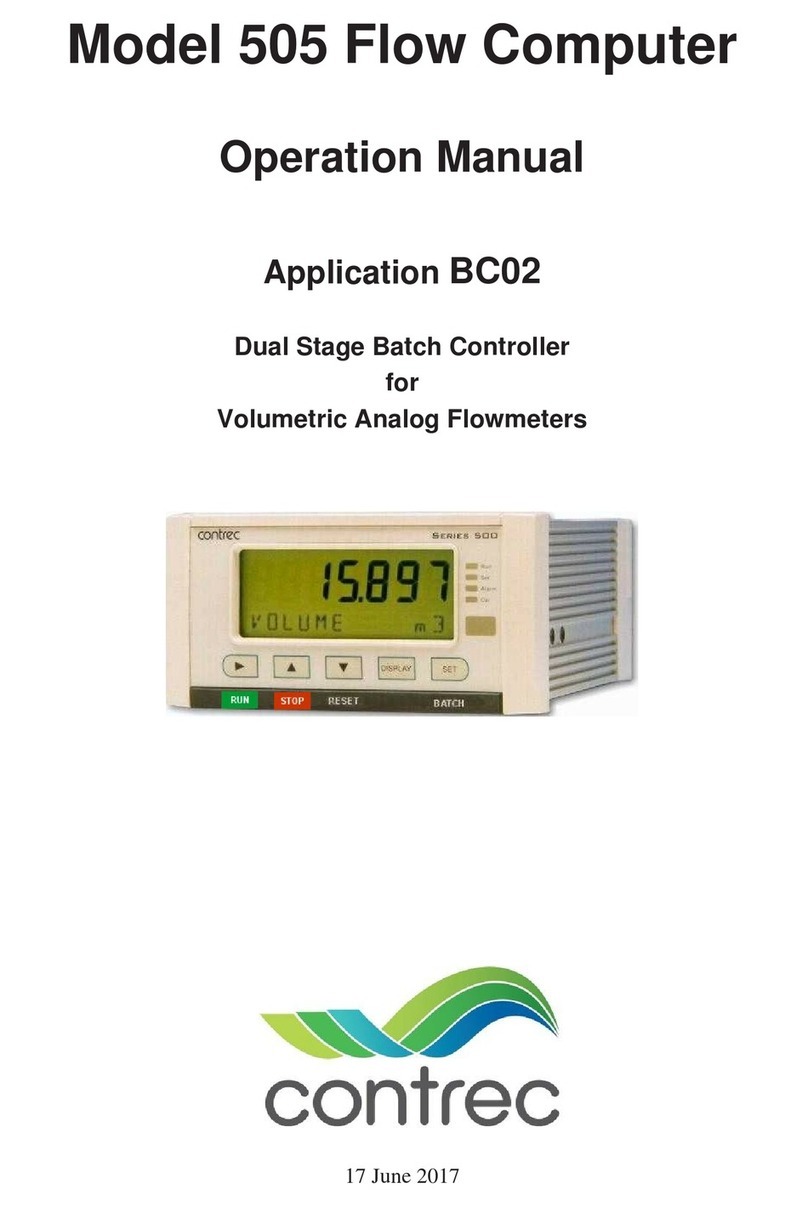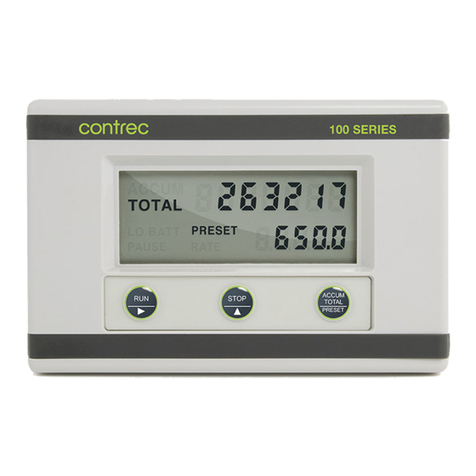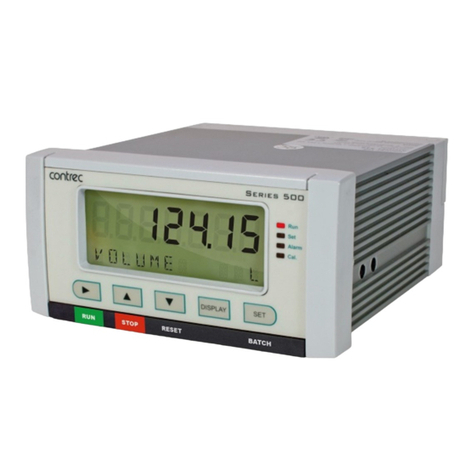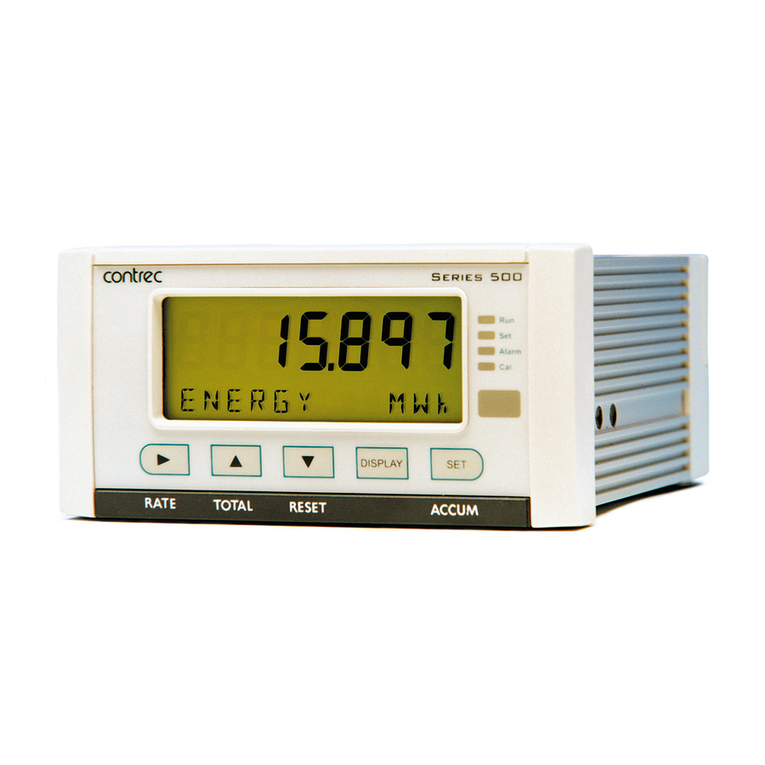
414L-M-V3
1. INTRODUCTION
The Model 414L Batch Controller uses temperature correction to calculate
the volumetric flow for liquids at standard reference conditions and to
batch liquids using one or two stage valve control.
Mass flow can also be calculated from the temperature input and the
volumetric flow input. Therefore, the Model 414L Batch Controller will
enable relatively low cost mass flow measurement and control using positive
displacement or turbine flowmeters and an RTD.
The Model 414L is ideally suited to custody transfer applications and includes
the API/ASTM equations covering general petroleum products and LPG.
Quadrature signal inputs are provided, where it is required to ensure the
integrity of the flow signal, or to measure bi-directional flow.
Two versions of the instrument are available; the Model 414LR with direct
RTD input and the Model 414LA with a 4-20mA temperature input. Both
have two relay outputs capable of handling up to 5 Amps.
The Model 414L offers the following temperature compensation:
1. Density Correction
A five point temperature-density curve can be programmed and
the mass flow calculated.
2. Volume Correction for General Liquids
The thermal coefficient of expansion of the liquid can be
programmed and a reference temperature defined for volume
correction to that reference.
3. Petroleums
Volumetric correction to 15°C or 60°F for Crude, Oils, Jet Fuel and
Gasoline as determined by API/ASTM Table 54A, 54B and 54D for
metric units and Tables 24A, 24B and 24D for US units.
Introduction 3
